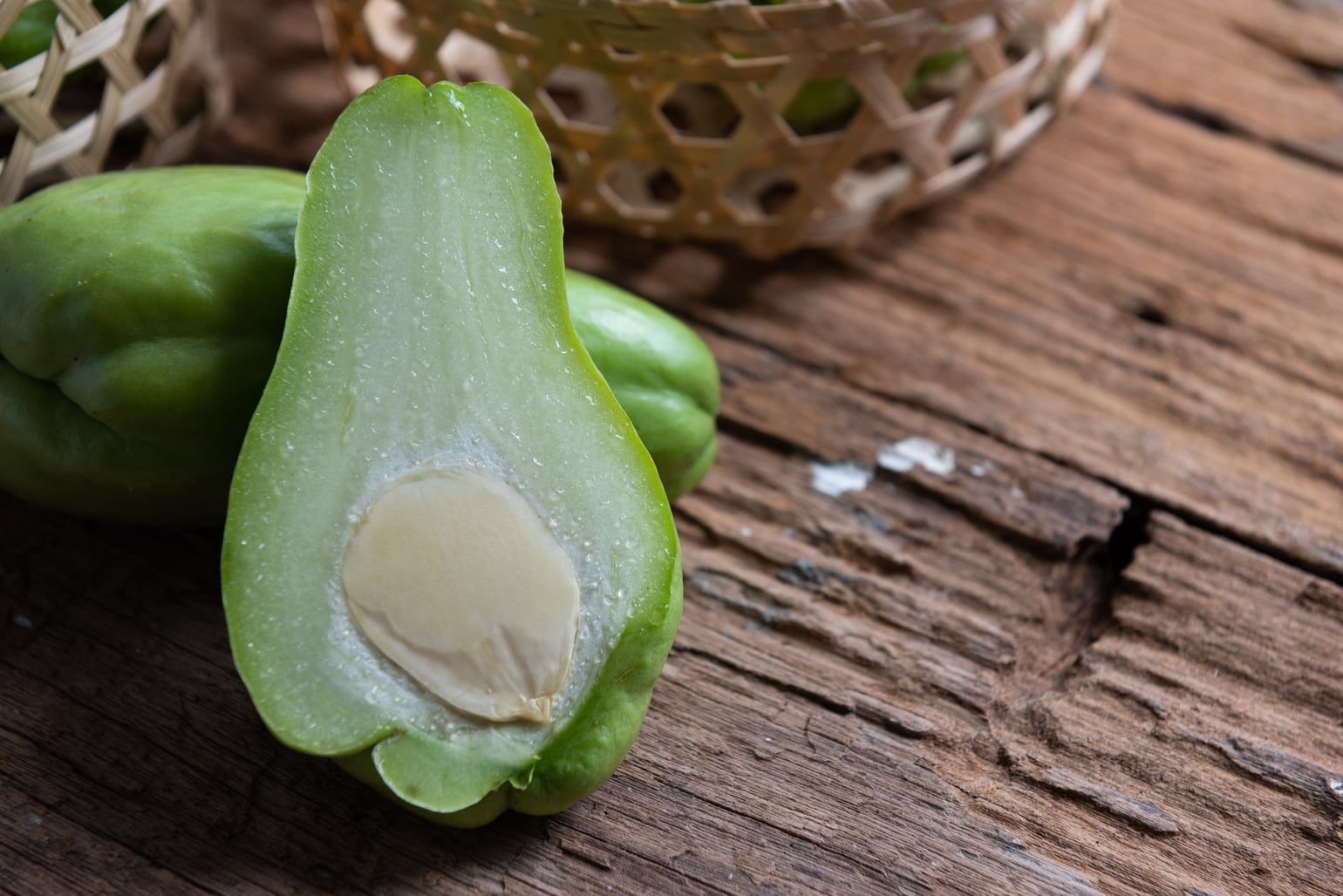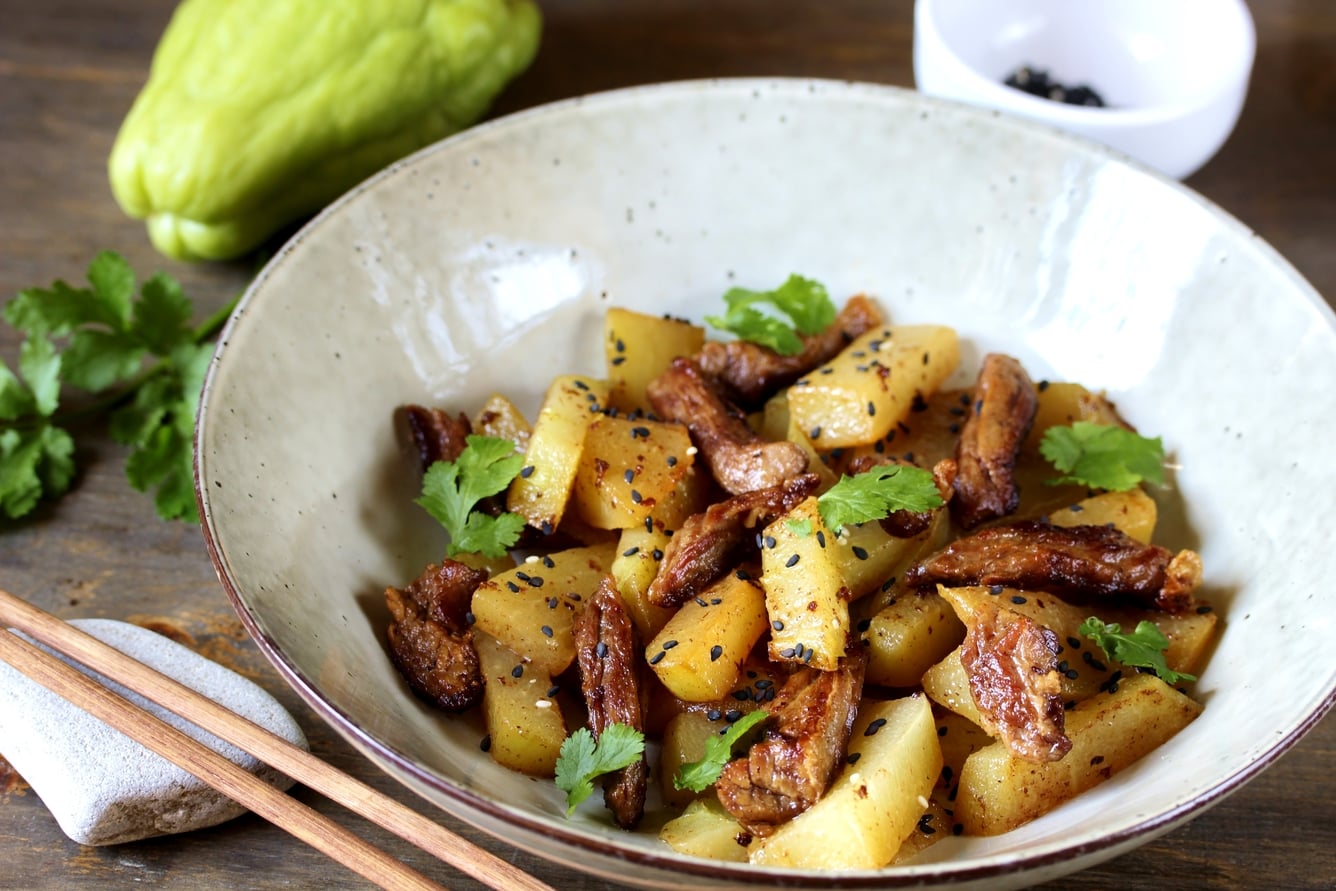Chayote, where are you?
Chayote, christophene, chocho, mirliton… many are the nicknames for this Aztec prince.His botanical name is Sechium edule, and as strange as it may seem, it belongs to the same family as the cucumber, the pumpkin or the melon. Now that you know about the chayote’s family tree, you have no excuse to leave it out of your diet.
After travelling the world for five long centuries, the chayote carries a lot of baggage. Prince of the Aztecs and idolized by the Incas, today it is loved for its soft flavour and low calorie content, as well for the diversity of recipes it can be incorporated into.
Five centuries of the chayote
During the Portuguese discoveries, trips to the Americas revealed not only interesting new lands and cultures, but also food that have never been seen before by the Europeans. This is how the story of the chayote was written, introduced in Europe during the 15th and 16th centuries.
The chayote, as named in Nahuatl (the Aztec language), originated in Central America – more specifically in the regions we now call Mexico, Costa Rica and Panama. From there he travelled to Europe, from where he was taken to the rest of the world. Today it is part of the gastronomy of countries as diverse as Brazil or Indonesia. It is also anchored in Portugal – in particular in Madeira – where it has been named Pimpinela, an important ingredient in the local gastronomy.
Is the chayote a fruit or a vegetable?
The chayote is technically a fruit, but it is handled as a vegetable – just like tomatoes are. Its shape and flavour can be confusing at first taste, since it looks like a pear at first sight, but has the soft reminiscent taste of a cucumber.

The chayote has a green skin, ranging from whitish-green to dark-green. Its peel can be perfectly soft and smooth or it can contain a few thorns, its flesh being usually white or yellowish. It has one single seed, like an avocado, but a smaller one. The most popular variety (the one you probably have already seen and wondered what could it be) is the one that has a smooth, light green skin.
The nutritional benefits of the chayote
Although it is easy to consume food that is out of season, the chayote can be eaten all year round, since it can be relatively well-preserved and can be grown whenever the weather is mild enough.
Its growing popularity is due to its extremely low calorie and high nutrient content: the chayote is a source of zinc and of the vitamin B complex. In addition, its leaves, sprouts and roots can also be eaten, these being rich in vitamins B and C, as well as in minerals.
How to eat chayote: a different place in each different gastronomy
The most common way to eat it is in a soup, but this is not, by far, the only way it can be eaten.

If you don’t believe it, ask the people from Madeira who love to eat chayote with beans, potatoes and with corn on the cob as a side dish to stews. Or take a look at a South American cookbook, where you shall see that it is often savoured breaded and fried. If you’re more into Asian food, incorporate it in a delicious chop suey, or in an aromatic curry. If you happen to be a master in the kitchen, try it in a soufflé. If that’s not the case, marinate it in lemon or lime juice and add it to a healthy salad.
But be careful: the chayote is extremely sensitive and can easily become dented if it falls on the floor or if it’s handled without proper care.
Try it in a refreshing cucumber juice, or in a watercress cream, both extremely healthy options.


